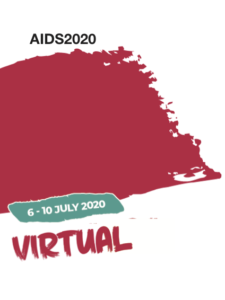Dolutegravir associated with weight gain in African ART programmes: findings from AFRICOS
22 July 2020. Related: Conference reports, Side effects, World AIDS 23 Virtual 2020.
Clinical trials conducted in African countries, notably ADVANCE and NAMSAL, have shown dolutegravir (DTG)-associated weight gain and reports of hyperglycaemia have emerged during the rollout of TLD. [2, 3]
The African Cohort Study (AFRICOS) enrolled participants at twelve PEPFAR-supported clinics in Kenya, Nigeria, Tanzania and Uganda to look at the risk of developing high BMI and hyperglycaemia in this cohort.
The study defined high BMI as >25 kg/m2: overweight 25–29 and obese 30+ kg/m2. Hyperglycaemia was defined as fasting glucose >99, any glucose >199 or taking medication for this condition. Participants with either high BMI or hypoglycaemia at baseline were excluded.
Of 742 participants receiving TLD, 529 (71.3%) were men and 213 (28.7%) women. Older participants were also more likely to receive TLD than younger ones. Both comparisons <0.001. These differences were probably associated with caution about DTG use in women of child-bearing potential during transition to TLD. Depression was documented in 16.3% of participants receiving TLD compared with 12.8% receiving other ART, p=0.03.
Median time on TLD was 225 days (IQR 127 to 297); 451 participants developed high BMI during follow up. The authors noted that incidence of high BMI increased with any ART exposure.
After adjusting for study site, gender, age and depression, the adjusted hazard ratio (aHR) for developing high BMI for participants receiving TLD was 1.85 (95% CI 1.24 to 2.76). ART naive participants had a 55% lower rate compared to those on non-TLD ART: aHR 0.45 (95% CI 0.28 to 0.74).
Hyperglycaemia in AFRICOS was usually mild and the authors reported no severe cases. Although participants receiving TLD had an increased risk of hyperglycaemia compared with those on non-TLD ART in the unadjusted model, after adjustment this difference was not statistically significant: aHR 1.27 (95% CI 0.02 to 1.97). ART-naive participants had a 78% lower rate of becoming overweight or obese compared to those receiving a non-DTG regimen: aHR 0.22 (95% CI 0.12 to 0.43).
The authors noted independent effects for male sex, older age and geographic location on high BMI. The same effects were also demonstrated for hyperglycaemia, as was high BMI. They added that these findings have implications for comprehensive care models.
References
- Ake JA et al. Weight gain and hyperglycaemia during the dolutegravir transition in Africa. AIDS 2020 virtual. 6–10 July 2020. Oral abstract OAB0602.
https://cattendee.abstractsonline.com/meeting/9289/Session/35 (session)
https://cattendee.abstractsonline.com/meeting/9289/presentation/83 (presentation)
- Clayden P. Dolutegravir-based first-line non-inferior to efavirenz-based ART but associated with substantial weight gain: results from the ADVANCE study. HTB. 23 August 2019.
https://i-base.info/htb/36581 - Clayden P. Dolutegravir associated with hyperglycaemia in people switching first-line ART in Uganda. HTB. 1 April 2020.
https://i-base.info/htb/37218
This article was first posted on 9 July 2020.


 Polly Clayden, HIV i-Base
Polly Clayden, HIV i-Base